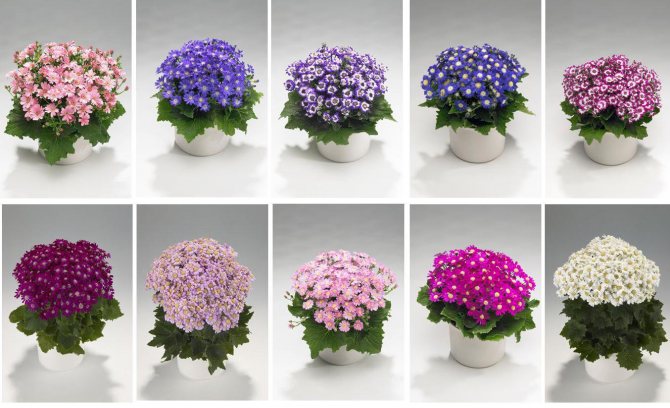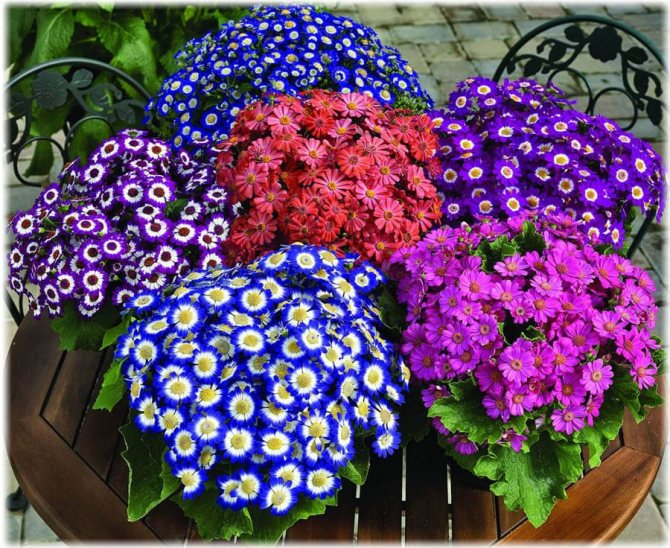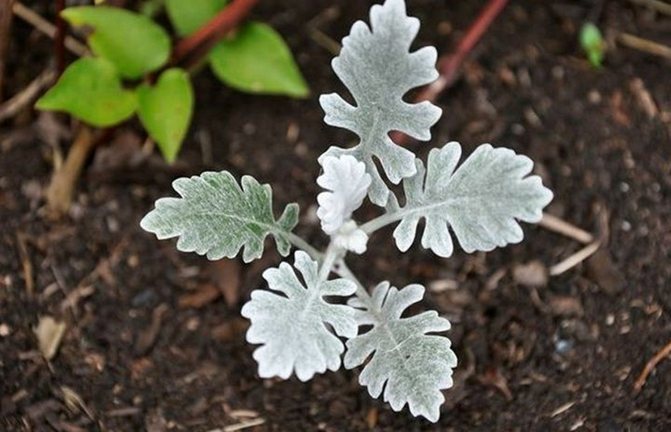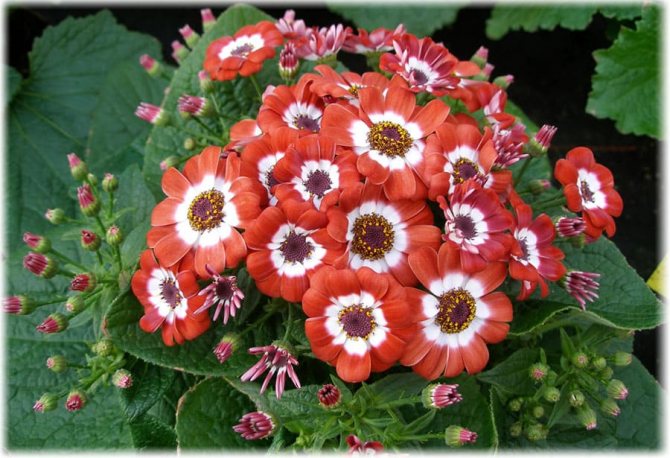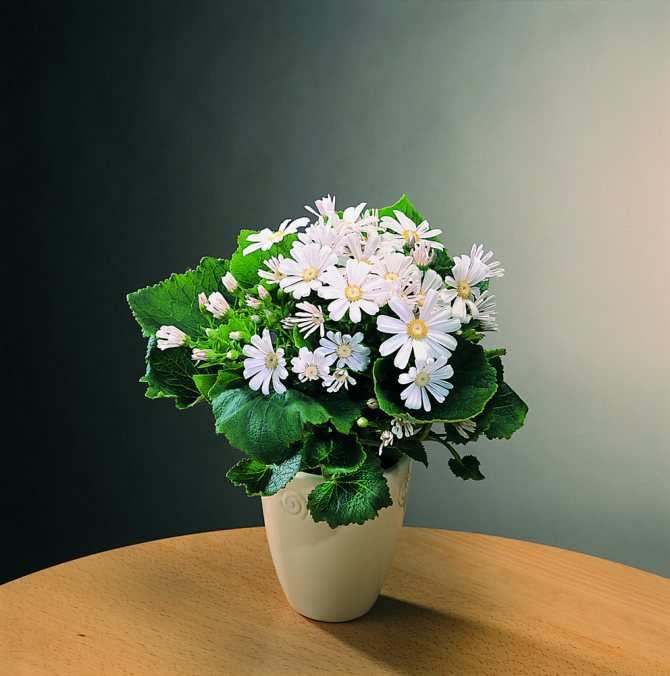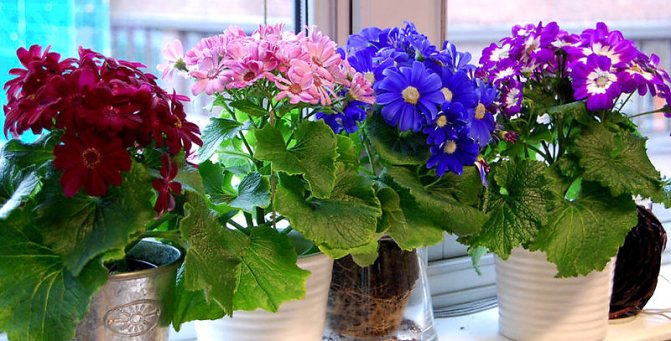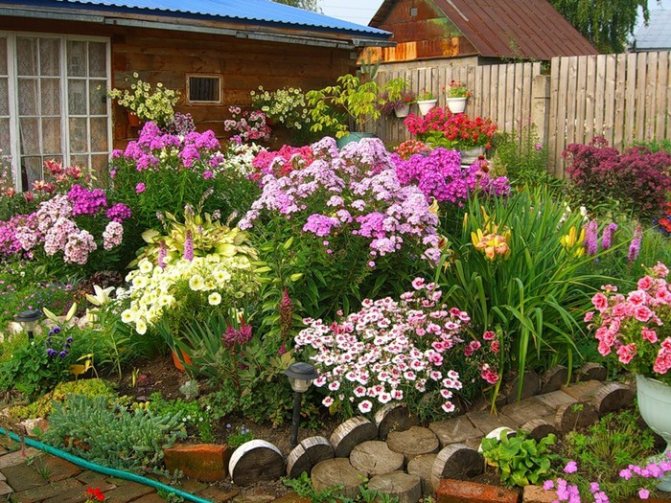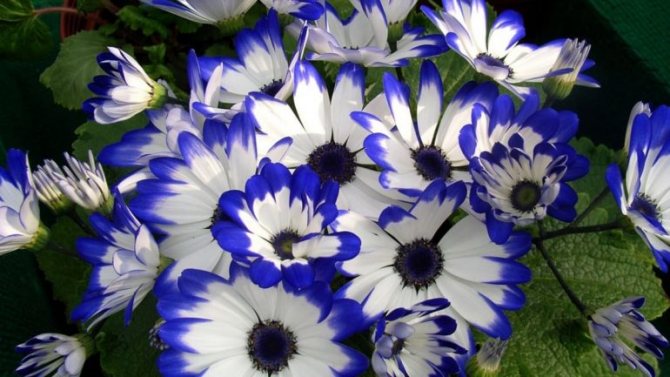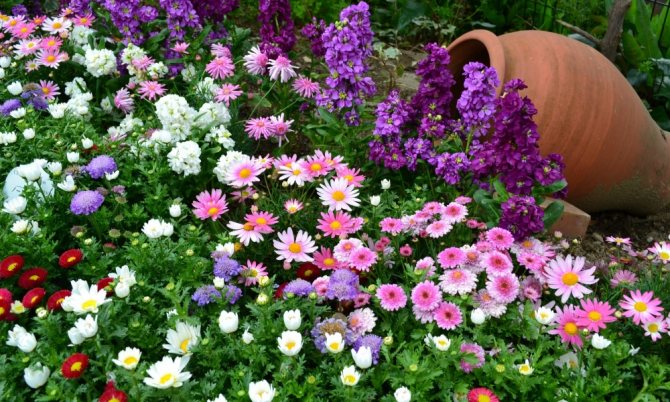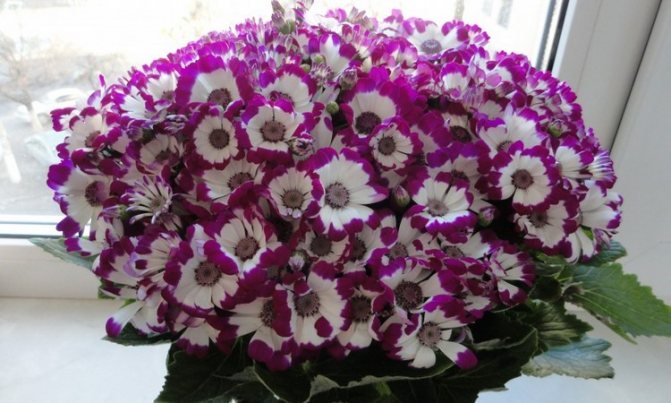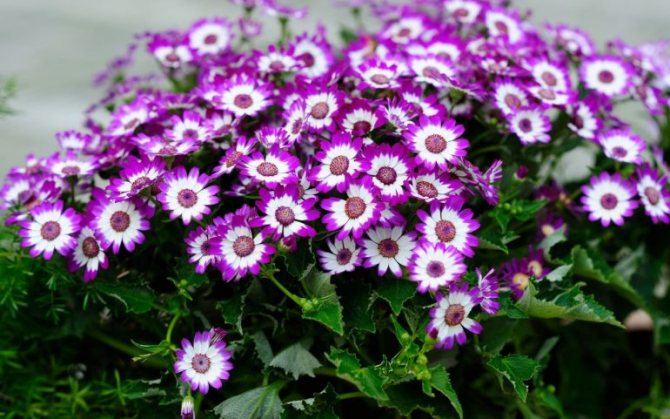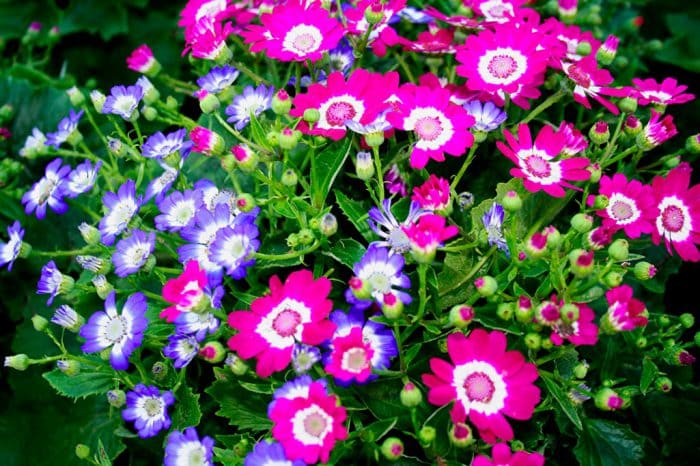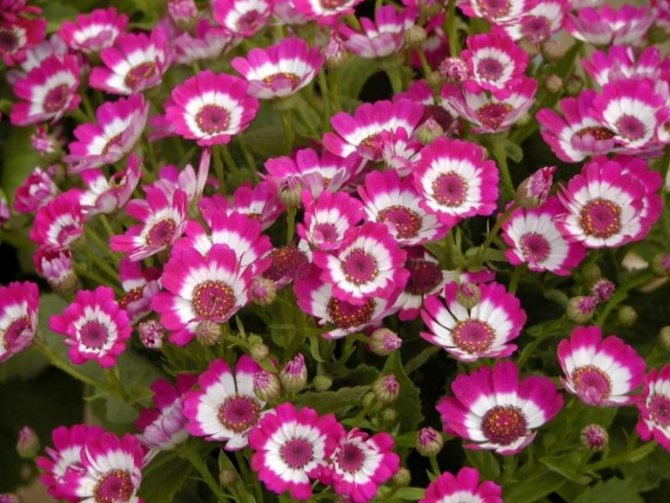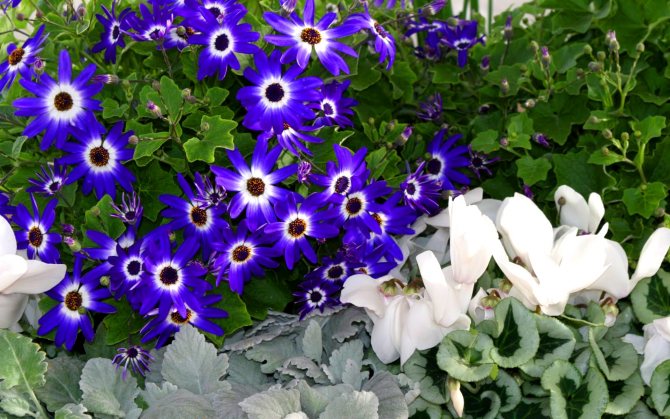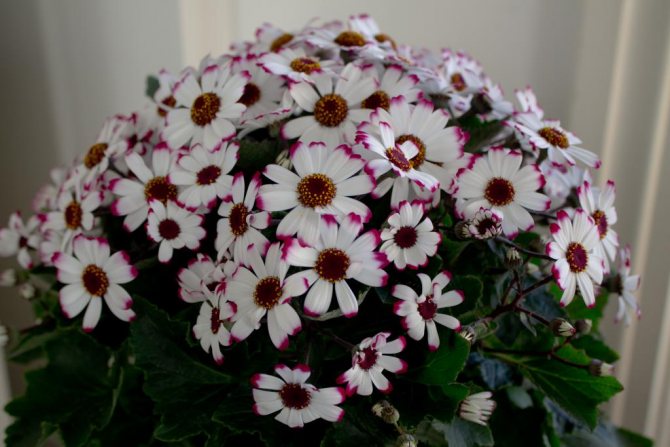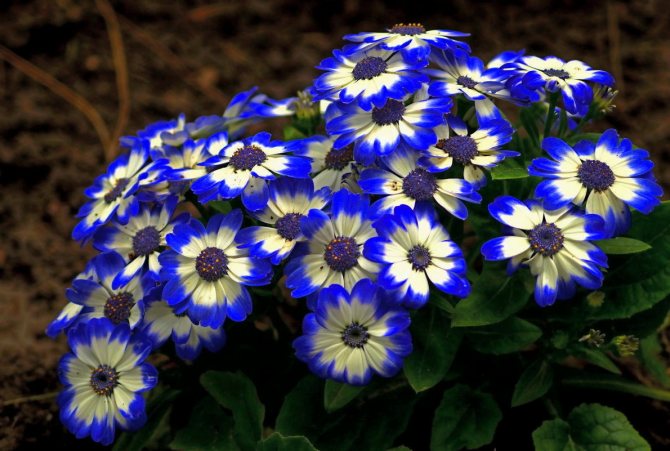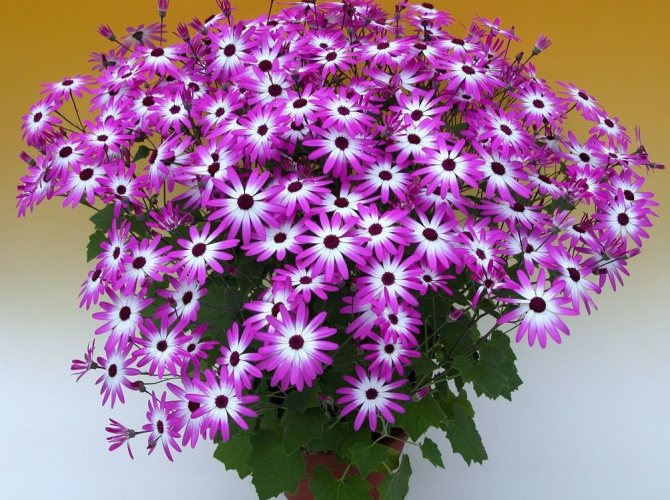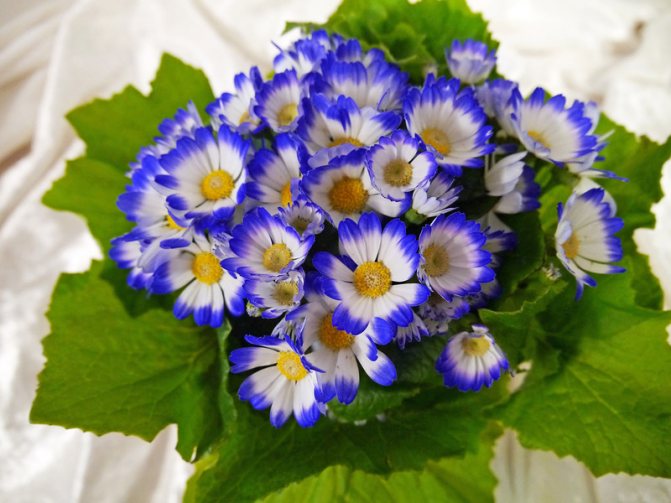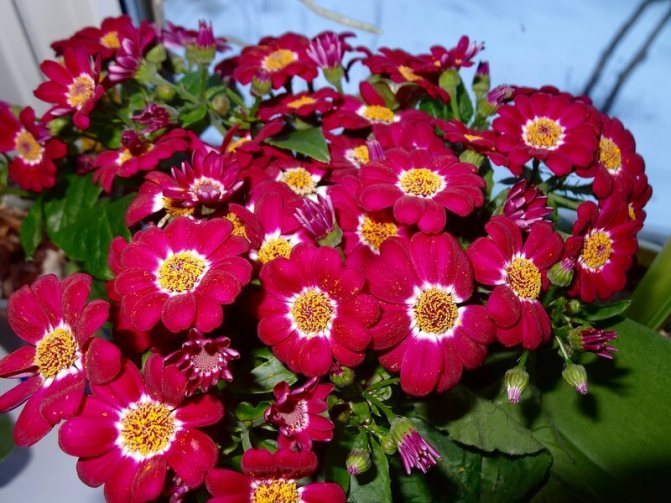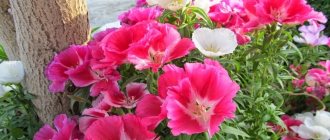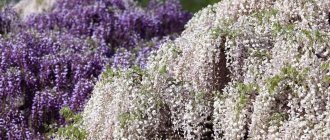The plant is harmoniously combined with bright border flowers
Cineraria silvery is not demanding in planting and maintenance, so many landscape designers choose it for decoration. She is no less famous among those who like to decorate her flower bed with an unusual plant. This is no coincidence, because its delicate velvety leaves and unusual color attract attention.
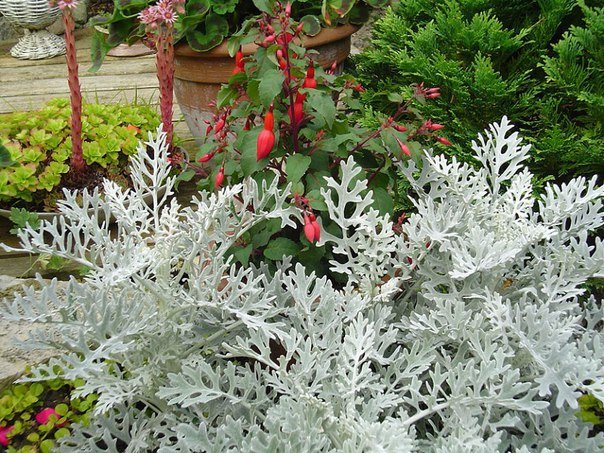
Cineraria - a velvety plant to the touch


An example of an original country decoration
Content
- Listen to the article
- Description
- Growing cineraria from seeds Sowing
- Seedling care
- When to plant
- How to grow
- Cineraria maritima
Views
Indoor cineraria is valued by a plant lover for the fact that it blooms in the winter-spring period, when most of the potted flora is resting. This flower is often referred to as the purple daisy.
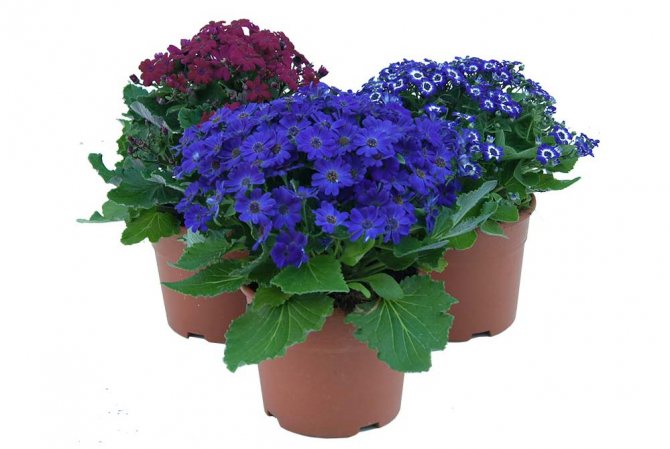

There are several decorative varieties of room cineraria:
- Double, growing up to 35-50 cm and dissolving flowers up to 5 centimeters in diameter with bicolor petals.
- Grandiflora, dissolving large inflorescences-baskets.
- Stellata with indigo-colored buds.
Planting and caring for cineraria
- Landing: sowing seeds for seedlings in early April, planting seedlings in open ground - in mid-May.
- Bloom: from mid-June to frost.
- Lighting: bright light in the morning and partial shade in the afternoon.
- The soil: fertile, well-drained, neutral or slightly alkaline reaction.
- Watering: plentiful, regular.
- Top dressing: 2 times a month with complex mineral fertilizers.
- Reproduction: flowering species - by seed method, decorative deciduous - by seeds and cuttings.
- Pests: aphids, spider mites.
- Diseases: powdery mildew, rust.
Read more about the cultivation of cineraria below.
Seed collection and sowing time determination
Beautifully flowering species of cineraria, including bloody ones, reproduce exclusively by seed. Seeds can be obtained in two ways: purchased or collected from a flower bed. In the second case, the inflorescences are waited for wilting and the seeds are shaken out into a paper bag. Then they are laid out in a thin layer on paper, which will absorb moisture, and after drying, they are rubbed to separate them from debris.
The sowing time is determined based on when exactly you want to get blooming blooming cineraria in all its splendor. The preparation period for a plant to bloom is 8-9 months. To decorate garden flower beds in August-September, seedlings begin to be prepared in December. If you plan to keep it as a potted plant in winter, they start sowing in April-May.
Attention! The seeds of cineraria sprout amicably, but retain their viability for no more than three years.
Cineraria flower - description
The cineraria plant (the name is translated from Latin as "ashy") can be both a shrub and a herbaceous plant. In nature, cineraria are most common in Madagascar and the tropics of Africa.In indoor gardening, only the type of bloody cineraria (Cineraria cruenta) is widespread, it is also a hybrid cineraria (Cineraria hybrida), although in fact it is a hybrid groundwort. In garden culture, the cineraria flower is grown mainly as an annual or biennial. The height of the cineraria is from 30 to 90 cm, the stem is strongly branched, the leaves are large, petiolate, lyre-shaped or oval, pinnately dissected in many species. Both stems and leaves are pubescent. The terminal corymbose inflorescences consist of simple or double baskets with ligulate flowers of red, white, yellow, purple, surrounding an islet of yellow tubular flowers. Cineraria blooms from mid-June to frost.


Rules and timing for picking cineraria seedlings
It is advisable to dive plants only from the moment a pair of true leaves is formed. Some growers grow cineraria without picking at all. This is quite possible, although the plants are slightly slower in development.
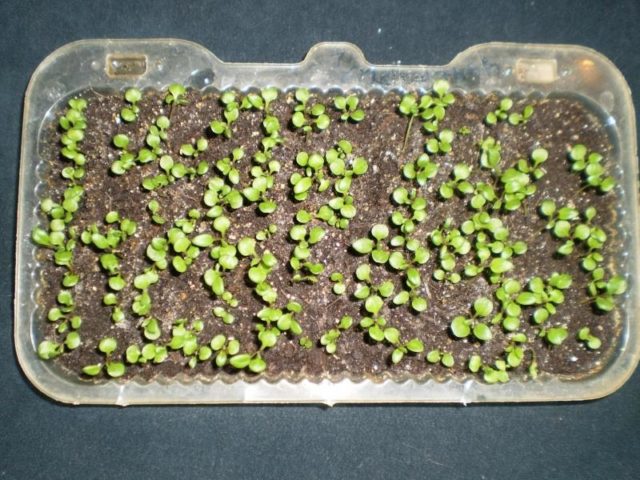

If you try to ensure the maximum full and rapid development of seedlings, then at the age of 6-7 weeks, the plants must be provided with individual containers (cups). Their volume should depend on the size of the roots, but not less than 200 cubic meters. cm.
If there are a lot of plants, and there are not enough pots and cups for everyone, then you can dive cineraria seedlings into diapers. This is the original name of the method when from any dense waterproof material such as polyethylene, some kind of cups are created. The resulting containers with seedlings are placed in a deep tray. Thus, you can also save a lot of space on the placement of the cut seedlings.


Growing cineraria from seeds
Cineraria from seed - sowing
If you want to know how to grow cineraria from seeds, then start by buying planting material, and although this African plant is not such a frequent phenomenon in our gardens, it is quite possible to buy seeds. By the way, the germination rate of cineraria seeds is very high. Sowing cineraria for seedlings is carried out at the beginning of April: in a container filled with a mixture of sand and peat in equal parts, sow the seeds of cineraria, without embedding them in the soil, but compacting the surface after sowing with a wooden ruler, then spraying the soil with water from a sprayer or moistening the soil in a way bottom watering, cover the container with glass to create a greenhouse effect.
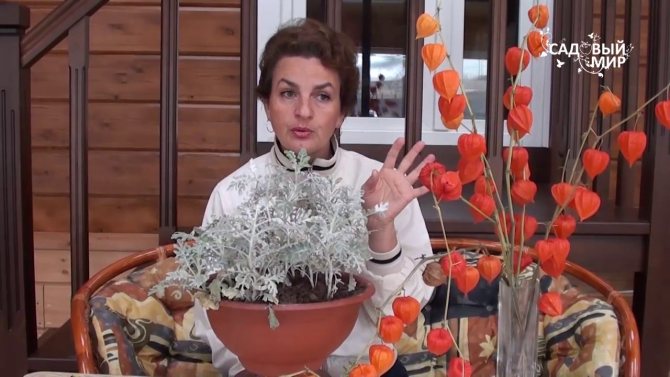

Seedlings of cineraria
Usually, cineraria from seeds germinates in a week or ten days, and as soon as shoots appear, the container is rearranged in a well-lit place, and with the appearance of two true leaves, the seedlings dive into personal containers. It is necessary to remove the seedling for transplanting together with a lump of earth, and it is better to transplant it into peat briquettes, so that later there will be no problems with planting seedlings in open ground. If you do everything on time and correctly, then by the time the seedlings are transplanted to a plot in the garden, they will develop into strong young plants.
- Fieldfare: planting and care in the open field, types and varieties
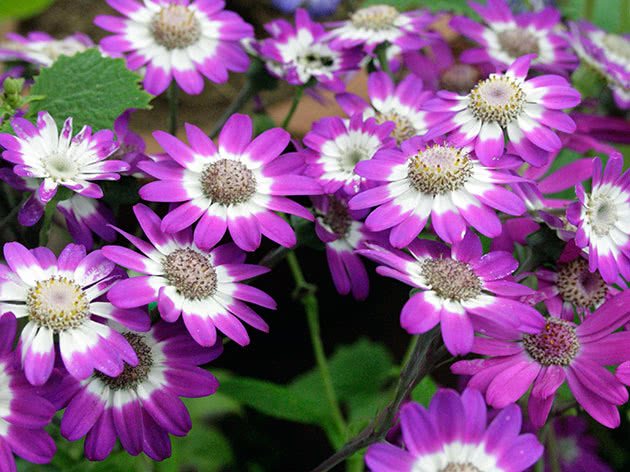

Growing problems
| Lack of flowering. | Warm content, gross violation of the watering regime, lack of lighting, too large a pot. | Adjust containment conditions. If the pot is too large, transplant the flower. |
| The leaves turn yellow and wither. | Possible reasons are poor watering and hypothermia. | In winter, do not place the flower close to the glass, do not overmoisten the soil. If the cineraria has not yet died, transfer it to a warmer place, pour well with water at room temperature. |
| Dark spots. | A possible cause is an infectious disease. The plant is susceptible to late blight and mycosis. | Ventilate the room more often, prophylactically treat the flower with a fungicide. |
| The plant is stretched. | Lack of light. | Move to a brighter spot. |
Pests are not affected very often. The greatest danger is the whitefly and aphids.If pests are found, the flower is treated with an insecticide.
Using different hybrid varieties, you can make up whole compositions. A huge plus of the plant is the ability to regulate the flowering time by sowing seedlings at different times of the year.
Planting cineraria
When to plant cineraria
Growing cineraria is not particularly troublesome, but the more information you have, the easier it will be for you. So, what are the preferences of cineraria? The lighting is preferably bright, but shaded at noon. The soil she needs is fertile and well-drained, slightly alkaline or neutral. If you have found a suitable site and brought the soil to the required pH value, then wait until mid-May, when sudden night frosts will be left behind, and proceed to transplant seedlings into open ground.
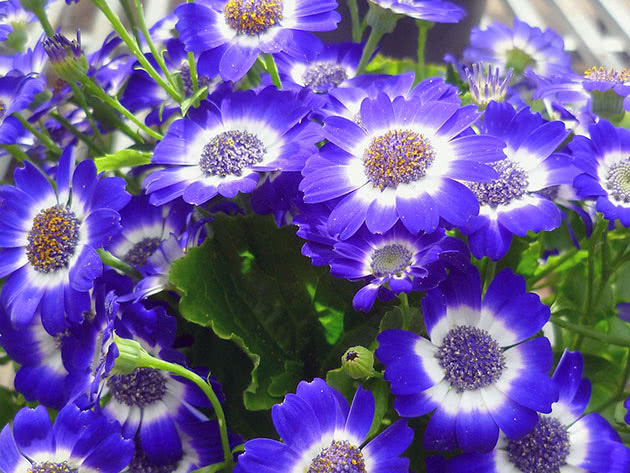

How to plant cineraria
Planting cineraria is carried out according to the usual principle: in holes dug at a distance of 20-25 cm from each other, seedlings of cineraria are planted along with the soil in which it grew. After planting, flatten the soil and water the area. If you have a premonition that frosts may return, cover the required time for planting cineraria at night with spunbond or lutrasil.


Room cineraria - home care
Being a native of warm countries, the indoor cineraria flower requires good care and the right conditions for keeping.
- Air temperature.
Temperature is of great importance for room cineraria. She does not like heat, so it is important to keep her cool - no higher than 20 ° C. Growing at a temperature of 10-15 ° C is ideal. - Lighting.
Indoor cineraria loves an abundance of sunlight, but it should be diffused - direct rays will not benefit it. - Air humidity.
The flower loves high humidity, but does not tolerate spraying. - The soil.
The ideal substrate for cineraria should consist of 1 part peat and 0.5 part compost, you can add bark or perlite. Fertilizing the plant is not required - such soil contains all the necessary nutrients.
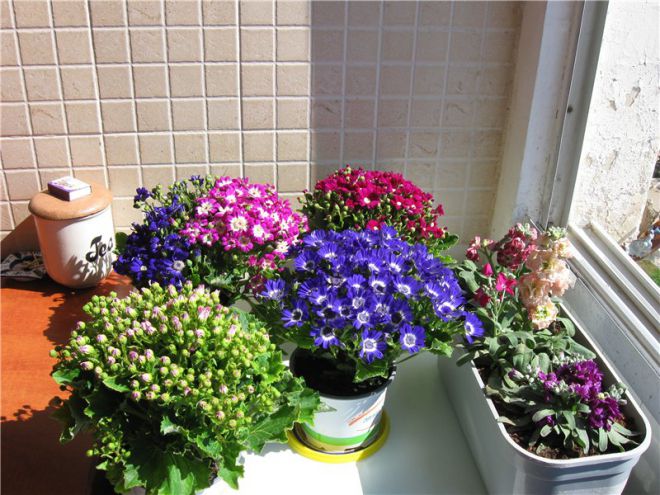

Cineraria - how to water?
Cineraria requires constant soil moisture, watering should be regular. But you should do it carefully - she does not like getting water on the foliage. And remember that both dry soil and excessively wet soil are equally harmful to her. On average, you need to water the flower about once a week at high humidity, preventing the soil from drying out. Rain or settled water should be used for this.
Cineraria - transplant after purchase
Indoor cineraria is often grown as an annual plant and thrown away after flowering, but if you want it to bloom again, you need a transplant, which many produce immediately after purchase. This can be done in the spring or summer after the end of the flowering period. To do this, drainage is done in the pot, soil is applied, a flower is planted. Weekly after transplanting, the plant is fed with a universal fertilizer for flowers. If you bought blooming cineraria, you should not transplant it right away.


Cineraria care
How to grow cineraria
Caring for cineraria is simple, the main thing in it is correctly organized watering. If the plant lacks moisture, it weakens, if there is too much moisture, the roots of cineraria rot. But almost all types of cineraria are drought-resistant, and, in principle, natural precipitation is enough for them. After rain or watering, you need to remove weeds on the site and loosen the soil. Remove wilted flowers at once, this will prolong the flowering period of the cineraria.
Cineraria is fed two to three times a month with mineral fertilizers. Ornamental-flowering species during the budding period are fed every week alternately with organic and mineral fertilizers.In decorative leafy species of cineraria, the buds are cut off immediately after emergence so that the plant does not waste energy and nutrition on them. That's all there is to know about caring for cineraria.
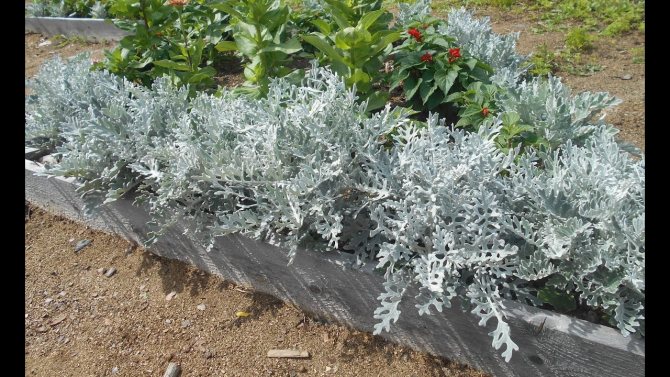

Care features
It is considered an easy plant to grow. For full growth, you need to create favorable conditions, ensure timely watering.
- Temperature. Can't stand the heat. In summer they try to keep it in cool rooms. The maximum temperature is 20 ° C, the optimum is 10-15 ° C. Can withstand higher temperatures outdoors. If possible, put it on the balcony. Grows well in air-conditioned rooms, protected from drafts. At night, it calmly tolerates a cold snap of up to 4 ° C.
- Lighting. The light is bright, diffused. Grows well on western and eastern windows. From the north side it stretches, from the south it suffers from the hot sun.
- Watering. The root system is developed, absorbs a lot of moisture. Water it abundantly, but monitor the condition of the soil - wait for the surface to dry out. Water is used soft, warm. They try to avoid getting moisture on the leaves.
- Humidity. Increased humidity is conducive to good growth. Do not spray! To increase the humidity, the pot is placed on a pallet with wet pebbles, expanded clay, sphagnum.
- Top dressing. Do not feed. A properly formulated soil mixture contains sufficient nutrients. Fertilization can delay or diminish flowering.
- The soil. The optimal composition is leaf soil, peat, compost. The recommended ratio is 2: 1: 0.5. Loosening additives - perlite or crushed pine bark will be beneficial.
Advice! To increase the decorative effect, it is recommended to cut cineraria. In decorative deciduous varieties, peduncles are cut off immediately after their appearance. In flowering species, dried inflorescences are removed.
Reproduction of cineraria
We have already talked about seed reproduction, but only decorative flowering species reproduce exclusively by seeds. For decorative deciduous varieties, there are other methods of reproduction - vegetative. For example, seaside cineraria (Cineraria maritima) propagates in the summer by cuttings 10 cm long. For this they make a "cuttings" - a portable box in which you plant cuttings for rooting. The cutter is needed so that you can easily move it from place to place in the garden, hiding the cuttings from the midday sun. You can make such a box from wooden boards and plywood.
At the bottom of the box with drainage holes, a mixture of sand with garden soil is poured into a layer of 10 cm, on top of 5-7 cm of coarse river sand, the surface is well leveled and the soil is spilled from a watering can with a pink solution of potassium permanganate. The lower cut of the cutting is dusted with Kornevin, then it is stuck into the soil in the cuttings and the soil around it is slightly squeezed. Then, half of a plastic bottle is put on each stalk, slightly pressing its cut into the sand, and this semblance of a greenhouse is not removed until the cuttings take root.
- Hernia: properties and contraindications, planting and care
Water the soil over the bottles once every two days, if necessary. When the cuttings take root, it will be necessary to remove the plastic from them for an hour or two every day, accustoming them to the environment in which they will grow. Then one fine cloudy, or even better rainy day, the bottles are removed completely. Cuttings hibernate in a cuticle in a cool room, and in spring they are planted in the ground.
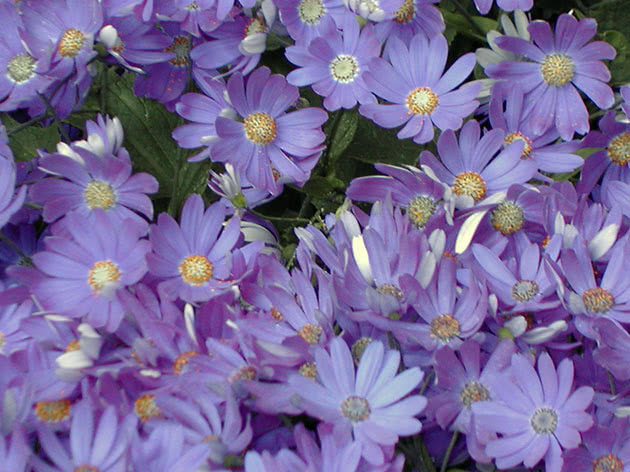

How to care for cineraria seedlings
If you keep the sown cineraria seeds at a temperature of + 22-24 ° C, then seedlings may appear in 6-9 days. In cooler conditions, the waiting time for seedlings may be postponed for several more days.
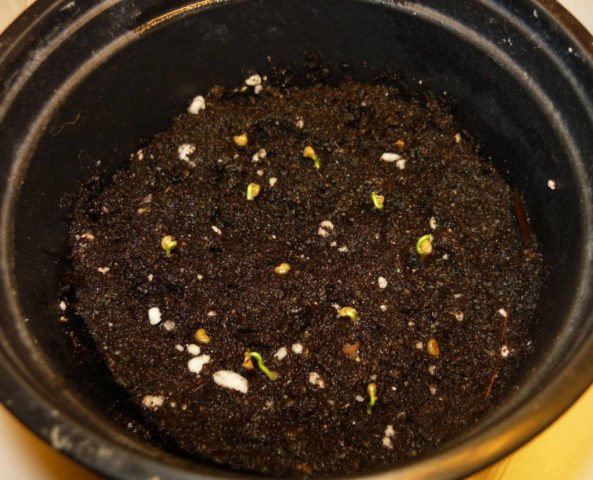

Lighting and temperature control
It is possible to grow high-quality seedlings of silver cineraria from seeds only by providing it with the maximum possible lighting after germination.But it is better to accustom her to bright sunlight gradually. After germination, it is advisable to slightly lower the temperature of the content to + 17-19 ° C. This will serve as a good incentive for the development of the root system.
Top dressing
When using good fertile substrates for sowing and transplanting cineraria, it does not need additional fertilizing at the stage of growing seedlings.
Watering and loosening
In the first 3-4 weeks after sowing, cineraria seedlings develop very slowly at home. The root system is just beginning to form, so you should be very careful with watering. Water the seedlings only when the topsoil dries slightly.
Pests and diseases of cineraria
Ornamental deciduous cineraria sometimes suffers from rust and powdery mildew (at too high temperature and humidity), as well as spider mites and aphids. Due to the dense pubescence of plants, it is easier to take preventive measures than to treat an already existing disease. As for pests, they are destroyed with systemic insecticides. In general, it must be said that all types of cineraria are very resistant to diseases and pests.
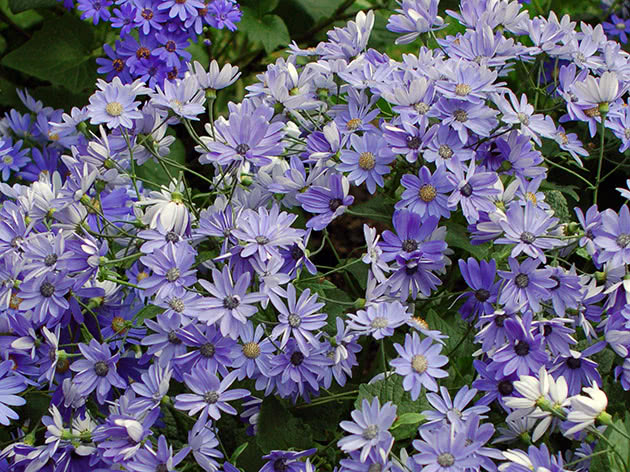

What is bloody cineraria?
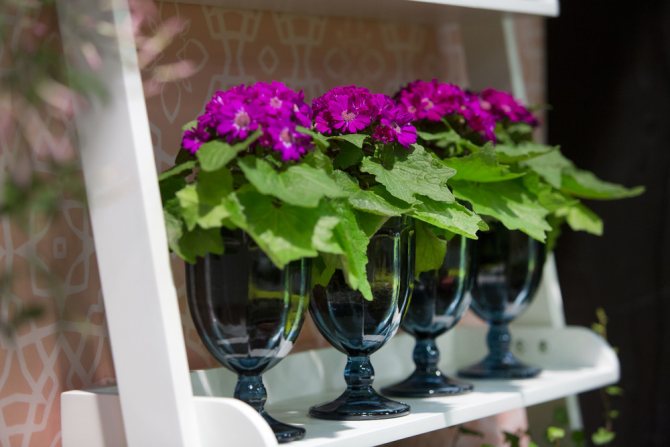

Bloody cineraria is the most beautiful representative of this family. Her leaves are not oval in shape, and the flowers are medium-sized, but differ in a rich palette of shades. Due to the shape of the flower, this plant is often confused with daisies. However, the color immediately betrays this flower.


Growing this variety is a little more difficult than other types of groundwort: it is recommended to sow it immediately in separate pots, and not make a pick later. The reason for this is the long wait for flowering. From the moment of planting, more than 9 months must pass before flowers can be seen. Given that the plant is an annual, not everyone decides to plant such a flower at home.


Sowing is carried out in December, the seeds cannot be filled up: they are distributed over the top of the ground and are slightly pressed. First, the soil must be thoroughly loosened and well moistened.
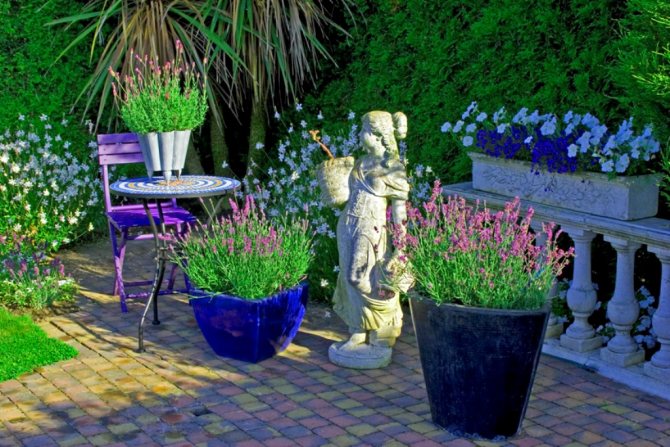

The overall temperature must be kept within twenty degrees, it is very important to remove condensation from the film, which must be used to cover all the pots, every day.
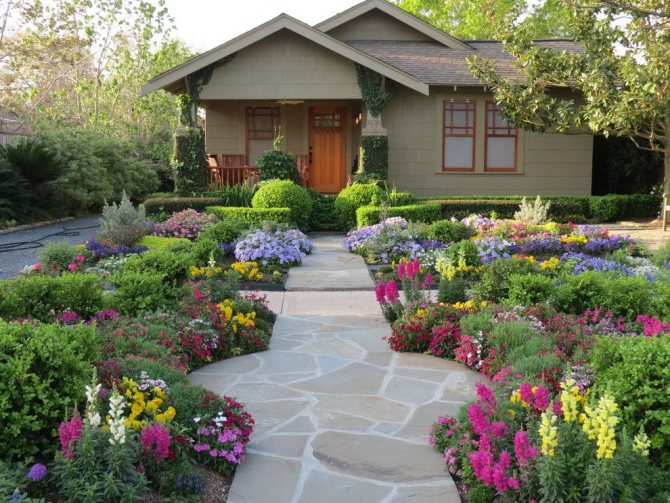

About sixteen days after planting, seedlings should hatch. If a pick is needed, it must be done after more than 2 leaves appear.


This type of cineraria requires a little less light than the rest. If you decide to plant a flower outdoors in summer, you need to protect it from direct sunlight, plant it in a shaded place. If all of the above conditions are met, the plant should bloom by autumn. Even minor frosts can kill cineraria, so next year it will have to be sown again.


Cineraria after flowering
As already mentioned, cineraria in our climatic conditions is grown mainly as an annual, therefore, after flowering, the plants are destroyed. But you can try to preserve decorative deciduous species until next spring. For this, the bushes are sprinkled with dry leaves for the winter. In the spring, after removing the foliage, cut off the frozen parts of the plants so that they do not interfere with the germination of young shoots. You can do it differently: dig up cineraria, transplant it into pots and leave it to winter in a bright, cool room. In the spring, you can plant the overwintered cineraria in the garden again.
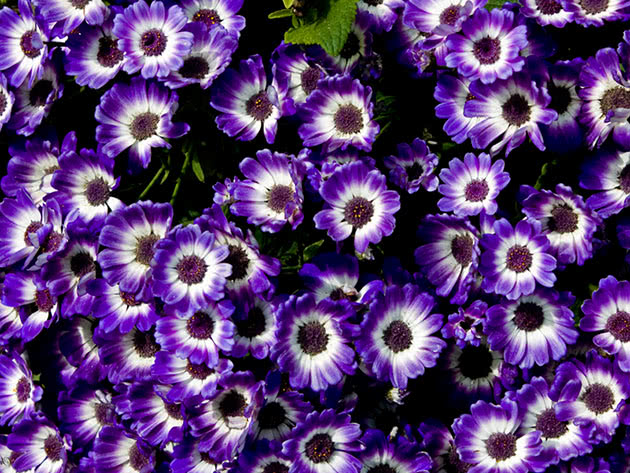

Wintering
There are two options for wintering cineraria:
- Wintering on the street. In order for the plant to easily survive any frosts, it must be covered with a sufficiently large layer of foliage. After the snow falls, it will be under a warm "fur coat" and frost will not be afraid of it.
- Digging up to frost. This is also a good option - you need to dig up the cineraria by the roots and transfer it to a cool place, optimally to the basement.It is advisable to dig it out with an earthen lump, which must be irrigated with water throughout the winter.
During the wintering period, cineraria sleeps, and with the onset of spring, its development cycle begins anew. If frozen leaves are found after winter, they must be removed.
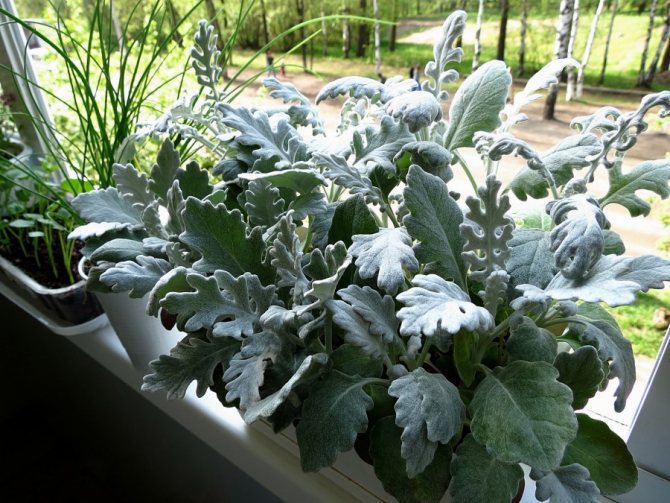

If there is little cineraria, you can dig it out for the winter.
Types and varieties of cineraria
The types of cineraria used in horticultural floriculture are divided into decorative deciduous, which are grown mainly in open ground, and decorative flowering, cultivated mostly as indoor plants.
Cineraria maritima
Either a seaside tree plant, or silver cineraria, or silver cineraria - an ornamental deciduous perennial with a rosette of silvery-green leaves. It is widely used in landscaping to create a backdrop for greenery or brightly colored flowers. Sometimes this species is also called "silver dust". Popular varieties:
- Silver Dust - low bushes with lacy leaves;
- Cirrus - taller, lush bushes with oval toothed leaves.
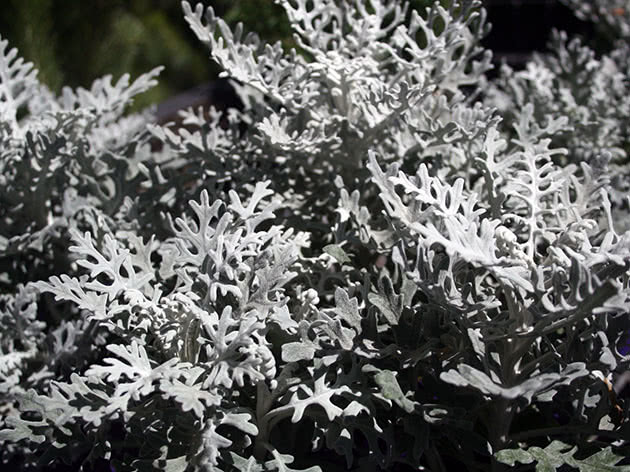

Cineraria hybrid
Or cineraria red, it is bloody - a bushy ornamental flowering plant, reaching a height of 30 centimeters or more. The leaves are round, large - from 10 to 20 cm in length, they are an excellent background for bright flowers, similar to daisies or chamomile. Varieties:
- Grandiflora - tall plant (50-70 cm in height), flower diameter from 5 to 8 cm;
- Double - bush height from 35 to 70 cm, flower diameter up to 5 cm;
- Stellata - plant height 70-90 cm, flower diameter from 2 to 4 cm;
- Sympathy - differs in all kinds of combinations of two shades.
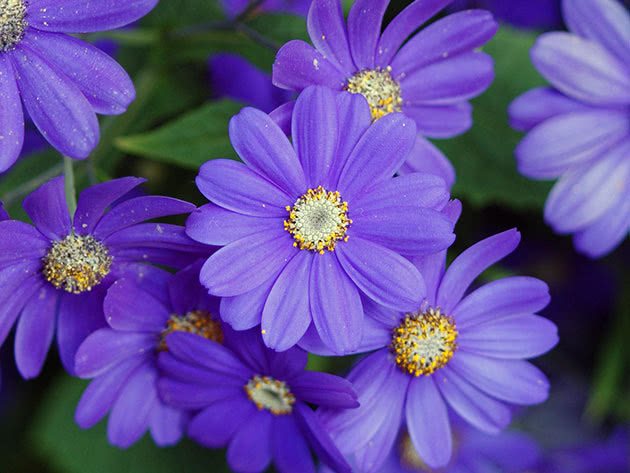

What kind of plant?
Cineraria silvery is a perennial of the Asteraceae family, which has become widespread in Europe. His homeland is the Mediterranean. Other names:
- Ashy groundwort.
- Jacobian seaside.
The most important distinguishing feature of this plant is the leaves with a velvety structure and a feathery structure. The most common color is gray.
Important! Cineraria silvery is successfully used in single plantings and as a background flower in compositions.


Flowers in a small spectacular composition
Botanical description
The homeland of cineraria silvery is the Mediterranean region - it was discovered back in the 16th century on the island of Madagascar and in the tropical thickets of Africa. However, it has taken root well in the conditions of the Russian climate, brought here during the time of Peter the Great.
Cineraria is a whole genus that is part of the vast Astrov family and is related to the Krestovnik genus. In cold winters, cineraria silvery is often grown as an annual, although it is a perennial in its homeland or in warm southern regions. Refers to low plants - the height of the bush rarely exceeds 30-60 cm.
All plants of the genus Cineraria are grasses or shrubs of low height, with small bright flowers in the form of baskets, collected in thyroid inflorescences. Unlike other species and varieties, Cineraria Silver is famous not for its bright flowering, but for its unusual carved leaves painted in an interesting silver color. Due to their shape, this plant also received the name "crosswort". The unusual nature of the leaves is also emphasized by their texture - they feel a bit like velvet to the touch.
In the period from June to July, silver cineraria begins to bloom. At this time, low, strict bushes are covered with bright yellow flowers. And although many gardeners prefer to remove the inflorescences right away so as not to spoil the flower bed, some are sure that the flowers give the plant a certain zest.
Breeders have bred many varieties of silver cineraria, which are well adapted to growing in various regions of Russia. The most popular varieties are:
- Cirrus. A short bush with oval, corrugated leaves. Grows up to 40-45 cm in height;
- Silver boat.A bush with beautiful, thinly dissected leaves, located on erect stems. Reaches 35 cm in height;
- Silver dust. Low-growing variety - up to 15-20 cm in height. A distinctive feature is thin, almost lacy leaves of a bright silvery color;
- Silverado. A low bush (up to 20-35 cm in height), decorated with dissected leaves of white-silver color.
These varieties take root well in the Russian climate and retain their decorative appearance for a long time after all other plants die off in the fall. Most often grown as an annual.
Conditions necessary for cineraria
The following content rules must be observed:
| Factor | Conditions |
| Location | Choose the lightest. Shade in the midday heat. They can burn greens. This will cause brown spots. |
| Temperature | Optimal - + 15 ... + 18 ° С. At +20 ° C and above, the greens will wither. At night, the plant suffers a decrease to +5 ° C. If cineraria grows at home, then from April to October keep it on the loggia, terrace, in a constantly ventilated room. |
| Priming | When planting in the garden, first dig up the ground, adding peat, compost and sand. Indoor specimens should be planted in medium-sized containers filled with peat and deciduous soil, compost. For both types of cultivation, it is recommended to add pieces of coniferous bark and wood ash to the substrate to prevent infection. |
| Humidity | High, but it is impossible to spray the bush because of the nap. You can put a basin with moistened moss in the room. On the street, water the soil abundantly without flooding the rhizome. |
| Watering | Copious, but avoid fluid stagnation. After moistening, loosen the soil, breaking the hard crust. |
| Top dressing | Regular, especially when the flower is planted on a poor substrate. Apply mineral mixtures a couple of times a month. In the spring - nitrogen fertilizers to build up a beautiful green mass. In summer - phosphorus compounds for better flowering. Change minerals to organic matter (mullein) several times a season. Indoor specimens should be fed every 7 days. |
| Pruning | After wilting, cut off the inflorescences. Prolonged branches growing in the wrong direction should be shortened. |
Gardeners reviews
Nika
When I was still a student, I studied at the university, I paid attention to a very attractive plant in city flower beds. It framed flower plantings very effectively, looked noble and beautiful. And now I am sure to plant cineraria, and this is it, in my area. Beauty!! I like it all. At the same time, it is unpretentious.
Lara99
Our cineraria winters without problems, only in the spring they stand as scalded, the frosts still disfigure them, and the hand stretches to uproot them, but then they freshen up, fluff, prettier, and bloom. And they say that they are annuals.
Next to which plants it is better to plant cineraria
Cineraria is a versatile plant, both indoor and outdoor. It can be planted as an independent crop, or it can be combined with other flowers.
Looks good on flower beds and borders with bright flowers (pink, yellow, red, orange), as well as cold colors (blue, purple, blue, lilac), emphasizing their beauty favorably, while leaving due attention to yourself. Gives the flower bed aesthetics and completeness, and is not planted just like grass.
With its help, you can even create patterns of various complexity in flower beds, which can often be observed in city parks and in the photo in groups dedicated to floriculture. The silver lawn looks really noble.
Looks good in the design of the lower tiers of multi-storey flower beds, decorative borders around the flower bed.
Due to the unpretentiousness of cineraria, you can plant it with any plants and give complete freedom to your imagination. The only thing worth remembering is that neighboring flowers should not shade too much.
Required temperature
In order for a cineraria plant to carry out flowering cultivation from seeds qualitatively, you will need to stock up on the knowledge of the conditions for optimal growth.
Home hybrid cineraria prefers low ambient temperatures. For the growth of flower buds, the plant needs a cool temperature regime - up to + 15 ° C.
It is highly discouraged to keep young grown seedlings at temperatures above + 20 ° С, they may die in the heat. For this reason, southern windows are prohibited.
Blooming cineraria easily survives nighttime temperature drops of up to + 5 ° C.
Reproduction without hassle
Since the plant is annual, the bloody groundwort is propagated by seeds. This is the easiest and most convenient way. After flowering, the bush is thrown away, because it is easier to sow and grow a new plant than to keep the old one. Sowing is carried out at the end of May:
- we sow seeds in a soil fertile in composition,
- sprinkle with earth a little,
- withstand a temperature regime of + 22C,
- when cotyledon leaves appear, we dive and plant.
For flowering to begin in the fall, the seeds must be sown in December. Duration of flowering is a month. A plant grown in this way looks like a separate bouquet that can be used as a gift.
Attention! The more often you pick off flowers that have already faded, the more abundant and longer the flowering will be.
Types of cineraria: photo
Soil and fertilizing
In order for indoor cineraria to bloom for a long time and magnificently, they plant it in the summer. In many ways, the growth and development of this culture depends on the substrate. The fact is that cineraria needs a special soil, consisting of equal proportions of peat, river sand and humus. You can also add a little mineral fertilizer with prolonged action to the soil. But even with such a nutrient composition of the soil in summer and spring, indoor cineraria requires additional feeding. It should be fertilized every two weeks with a special fertilizer designed for flowering plants. Top dressing is especially relevant during the period of laying future peduncles.
Lighting and temperature
Cineraria, like any other flowering plant, needs bright light. However, it should not be placed in direct sunlight. They can burn its delicate leaves. Therefore, indoor cineraria is not recommended to be placed on the south window. Although the plant is able to withstand high temperatures, a mode of 16-20 degrees Celsius is comfortable for it.


If the room is very hot, you should spray the air around the pot. In this case, do not allow drops of water to get on flowers or leaves, since indoor cineraria can get sick. The ideal option would be to install a humidifier in the room. The room in which the cineraria is located should be regularly ventilated. This plant is very fond of fresh air, but drafts are harmful to it. Therefore, before opening the window, it must be removed from the window sill.
Jacobi seaside: reproduction of a perennial
Reproduction of the ash-tree plant is carried out in several ways: sowing seeds, dividing the bush and grafting. All of them are tested and give a positive result. But experienced gardeners use only a few of them.
- Sowing seeds is the most convenient and common method.
- Division of bushes. It is used extremely rarely.
- Cuttings are usually done in mid-June, when lateral shoots appear on the plant.


Cineraria propagates very easily by cuttings
- they are carefully cut with a sharp knife;
- placed in moist soil and create a "greenhouse effect" by covering the plant with polyethylene;
- after 2.5 weeks, roots will appear, which means that the rooting process was successful.
- cuttings are ready for planting in a flower bed.
Photo gallery
How to choose a Cineraria in a flower shop
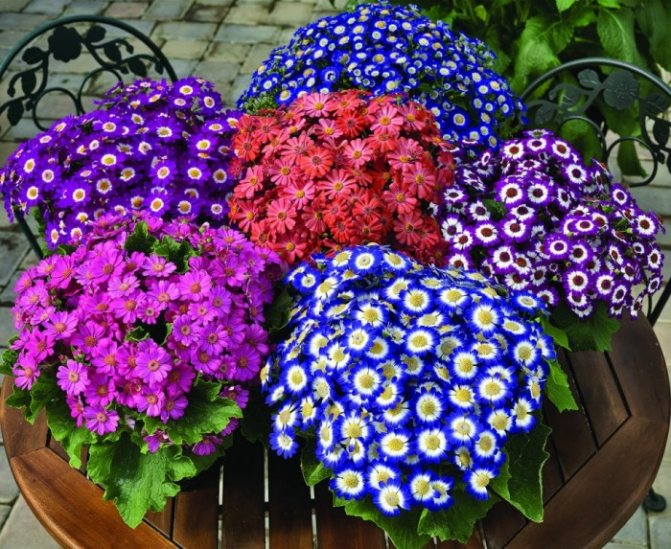

If you decide to buy a ready-made flowering Cineraria bush in the store, take it seriously. Look carefully at the plants you like. Assess their appearance and the condition of the shoots and leaves.Pay attention to the number of buds and flowers that have already opened. Choose the instance where there are many times more buds than blossoming flowers. At the slightest suspicion of any disease, the presence of insects, sluggish leaves or wilted inflorescences - refuse to purchase.
Useful properties of cineraria
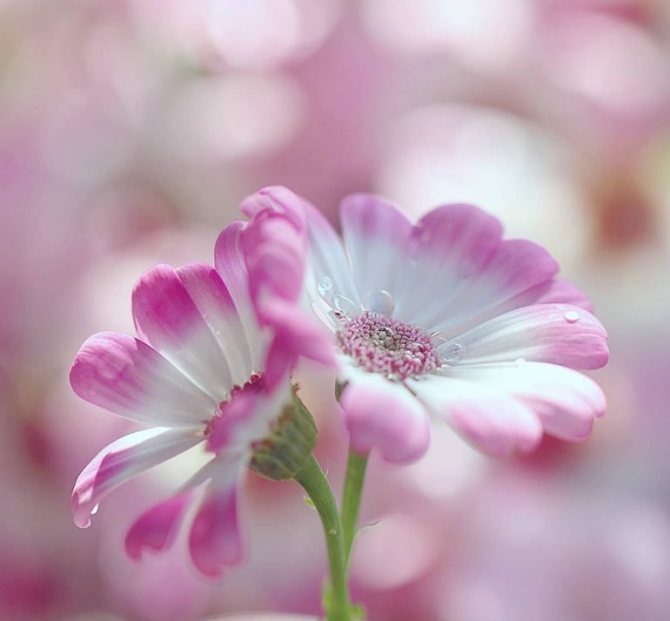

In addition to its attractive appearance, cineraria also has the ability to purify and ionize the air in the room where it is located. By absorbing toxic compounds and enriching the environment with oxygen and phytoorganic substances, the plant noticeably improves the microclimate of the home, which ultimately has a beneficial effect on the well-being of its owners.
Silver tones in landscape compositions


There are many annual species. But only an insignificant part is widely popular. Exclusively those who have an unusual appearance. But even among them there are forms that are completely different from each other.
The seaside cineraria, which has a silvery color of feathery leaves, stands apart in this list. She looks perfect:
- when decorating borders and flower beds, flower beds,
- in the form of edging in flower arrangements,
- as a background culture among flowers or greenery.
The pubescent leaves are like a light on a bright silvery carpet that changes shades. Against a whitened, silvery background, both greenery and vibrant flowers have additional benefits.
It is important to know: To achieve a truly decorative effect, the planting of a silvery beauty is carried out in a ribbon way. A spherical cineraria bush, it will set off a bright floral arrangement.
Peculiar combinations occur with plants that have cold or bright colors. Petunia, phlox, lobelia, marigolds, verbena, snapdragons, planted in rows, framed with silvery cineraria, will look very advantageous. Naturally, there is no need to plant all of these crops. 3-4 types are enough.
This beauty, whitening in foliage, is able to shade both tall and bright plants: red cannes and pelargoniums, purple sage... Cineraria does not play dominant roles. It's just that the silver edging makes other plants more visible.
There are decorative deciduous crops that can replace cineraria in plantings. They give the same silvery effect, creating richer tones for flowering plants. This, for example, undersized species of wormwood, New Zealand sedges, kochedzhnik (fern), feather grass, heuchera other.
You can use the varieties of seaside cineraria on loggias or balconies in container compositions or separately in flowerpots... It looks unusual and even a little exotic even without other cultures.
From the moment of planting and throughout the summer, the ashy groundwort will delight with its silvery colors, carved branches, and play with soft undertones. And even when other plants have faded and autumn comes, its bushes will peep out for a long time due to the withered foliage. After all, cineraria is not afraid of frost, although it came to us from the distant island of Madagascar.
Cineraria in winter
Cineraria is classified as a perennial plant, but in the climatic conditions of central Russia, the flower hibernates extremely poorly and often freezes out, despite even diligent care. That is why cineraria began to be grown as an annual rather than a winter plant. With the onset of cold weather, when the plant fades, all vegetation is destroyed, and the soil is dug up.
In the event that it is a pity to part with a pet, then it can be transplanted into tubs or pots again and kept at home in winter. For the content, the most bright room is suitable, but not too hot. In the spring, cineraria is again transplanted into open ground, re-preparing the soil for planting.
In more southern regions, the bushes winter well in the open field, for this they need to be wrapped in spruce branches, and covered with fallen leaves on top.
Cineraria is a spectacular ash-colored plant that looks like small deer horns, it will not leave anyone indifferent. It looks advantageous both in the open field and at home, so it can be safely planted even for novice flower growers. The variety of varieties of culture allows each person to choose what he likes.
Cutting and dividing the bush
Some amateur flower growers propagate the seaside wildflower by cuttings. To do this, cuttings about 10 cm long are cut from mother plants and cleaned from the lower leaves. Before rooting (in the soil), dust the end of the cutting with the available preparation to stimulate root formation.
In cut branches of cineraria marine, placed in water, the roots appear in a week.
The division of overgrown bushes is less commonly practiced. This is also one of the breeding options for seaside cineraria.
1. Seven Secrets of Success:
| 1. Growing temperature: throughout the year the temperature is from 18 to 29 ° C. |
| 2. Lighting: Well-lit location with a lot of reflected sunlight. |
| 3. Watering and humidity: Abundant and regular watering in spring and summer with light drying of the topsoil. In the fall, the frequency of watering is reduced in accordance with the temperature of the content. The air humidity can only be increased when the heat is intense in summer or when the central heating is on. |
| 4. Pruning: sanitary - carried out to maintain an attractive appearance and prevent the spread of fungal diseases, consists in the timely removal of old yellowed leaves and fading flowers with a sharp sterile instrument. |
| 5. Priming: nutritious and loose organic-based substrate with excellent drainage and slightly acidic pH. |
| 6. Top dressing: in spring and summer, fertilizing 2 times a month, in autumn and winter, fertilization is stopped and resumed only in spring. with the appearance of the first young leaves. |
| 7. Reproduction: cuttings in spring and summer or sowing seeds in spring. |
Botanical name: Cineraria.
Cineraria flower - family... Compositae or aster.
Origin... The plant is native to the tropical regions of Africa.
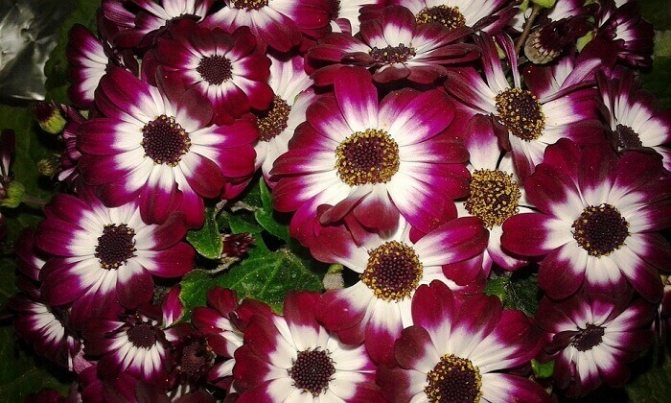

What it looks like. Cineraria are attractive flowering herbaceous plants.
Leaves simple, green, forming a basal rosette, spear-shaped or cordate, with well-pronounced numerous veins. The surface of the leaf blade has sparse pubescence and finely toothed margins.
The flowering of cineraria is so abundant that the leaves are practically hidden under the flowers. Peduncles slightly exceed the height of the leaf rosette and bear small ones - with a diameter of 3 - 7 cm, but very bright flowers in shades of blue, pink, burgundy, white, purple and red.
Plants with flowers of 2 tones are often found.
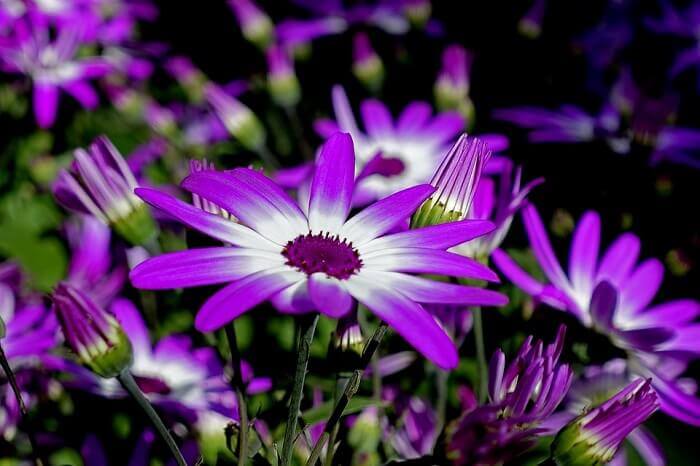

Certain types of cineraria do not have lush flowering, but they are distinguished by silvery-white foliage, which will perfectly set off any other plants.
↑ Up,
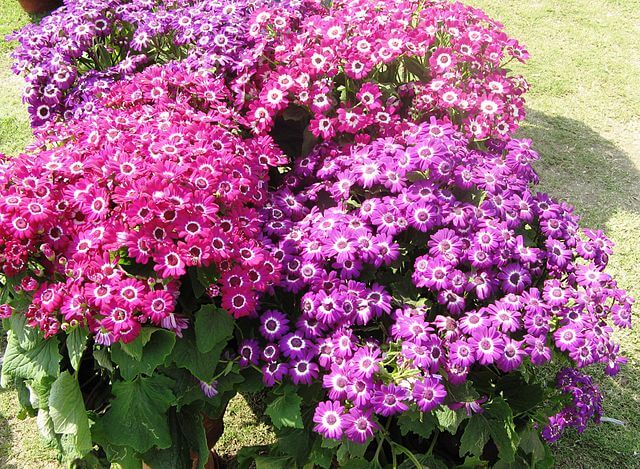

Height... Depending on the variety, the plants reach 30 - 60 cm... in height. The size of the plant will also depend on the conditions in which it is kept.
Description
Cineraria is a member of the Aster family (Latin Asteráceae) or Compositae (Latin Compósitae). It is characterized by the complex structure of the flower, which actually represents a whole inflorescence - a basket consisting of small flowers tightly adjacent to each other.
The homeland of Cineraria is the Canary Islands. The bulk grows in Madagascar, but can be found throughout tropical Africa in the form of perennial flowering herbaceous or semi-shrub plants.
Plant height ranges from 30 cm to 90 cm. Its erect shoots are prone to branching. A well-developed rhizome is formed in the form of a rod extending into the depths of the soil. Large leaves grow on long stems on petioles. The shape of the leaves is different: oval, lyre-shaped, feathery and dissected.The leaf surface is evenly dotted with gray-silvery hairs, because of which cineraria got its name (translated as ash).
The edges of the leaves are serrated. The leaf size reaches 10 cm, sometimes longer. The color of the leaves is often dark green, with a silvery sheen. The leaves are attached to the branches with petioles. At the ends of the shoots, lush inflorescences are formed in the form of simple or double baskets. Their core is lush, voluminous, with tubular multi-colored tongue petals. Different varieties differ in color. Initially, the natural color of the petals of Cineraria was scarlet. Now, breeders have bred varieties whose inflorescences are painted in saturated colors of all shades of the rainbow. More often than others, there are specimens with blue or pink petals, the color of which, closer to the center, smoothly turns into snow-white.
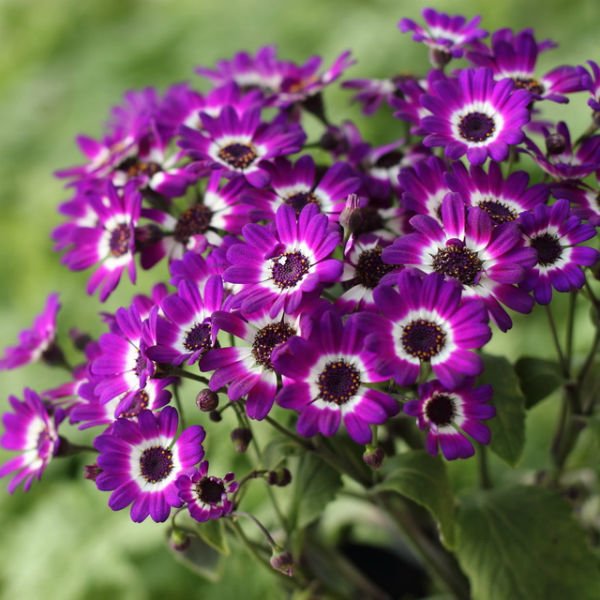

Cineraria begins to bloom 6 to 8 months after sowing. The flower can begin to bloom at any time of the year, if favorable conditions are met for this. Inflorescences-baskets bloom at the tops of the shoots and flaunt there for a month. After flowering, the fruit is formed in the form of an oblong box with coal-black small oblong seeds.
Benefit
This bright flower not only decorates your home with its attractive appearance, but also cleans the indoor air from harmful and dangerous compounds. This is especially important for amateur flower growers with asthma or allergies.
Indoor cineraria is an ideal gift for a woman on March 8th. I would be very happy to receive as a gift a compact bush with a lush cap of lilac or purple (white, pink, blue) flowers. Even without much maintenance, this bloom will last almost a month!
Indoor Cineraria also improves the indoor microclimate. It saturates the surrounding air not only with oxygen, but also with ozone, air ions, volatile phyto-organic substances, which helps to improve the general condition of the body of the person living with it.
By the way, they say that if during the blooming of the first bud of Cineraria you make a wish, then it will definitely come true.


